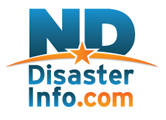Program Overview

Started in 1988, the Hazardous Chemicals Preparedness and Response Program requires yearly reporting to inventory hazardous and toxic chemicals stored across North Dakota.
Typical facilities reporting are:
- Bulk fuel plants
- Anhydrous ammonia plants
- Propane plants
- Agricultural processing plants
- Energy producing sites
- Oil producing sites
Storage fees collected are divided equally between NDDES to cover program expenses and the Local Emergency Planning Commissions (LEPCs) located in each county. The LEPCs may use the money to fund training, exercising, equipment, response, and salaries.
Program Outlook
Revenues are anticipated to increase an average of around five percent per year. This growth is mostly due to continuing changes in North Dakota's agricultural, manufacturing, and energy industries. Modern agriculture practices are utilizing additional chemicals in crop production. The advent of no-till farming and genetic engineered crops requires fertilizers along with new and additional chemicals for control of weeds and insects. Coal mining and its use by electrical generating plants and the manufacture of products such as synthetic natural gas are growing. Oil exploration and drilling have increased tremendously in the last few years and the risks to local communities are increasing. Also, new and larger pipelines that carry energy related products are being built and proposed across the state.
The result of this changing landscape is the increased amount of hazardous materials manufactured, stored, transported, and used throughout the state.
Program Quick Facts
- More than $126,000 collected during 2007 program year
- More than 3,000 facilities comprised of over 900 different entities report yearly
- 725 spill incidents reported
- 52 incidents required emergency response
- Common materials involved were ammonia, gasoline, diesel fuel, fertilizer spills, crude oil, sulfur dioxide, motor oil, chemical fires, and hydraulic fluid.

|











